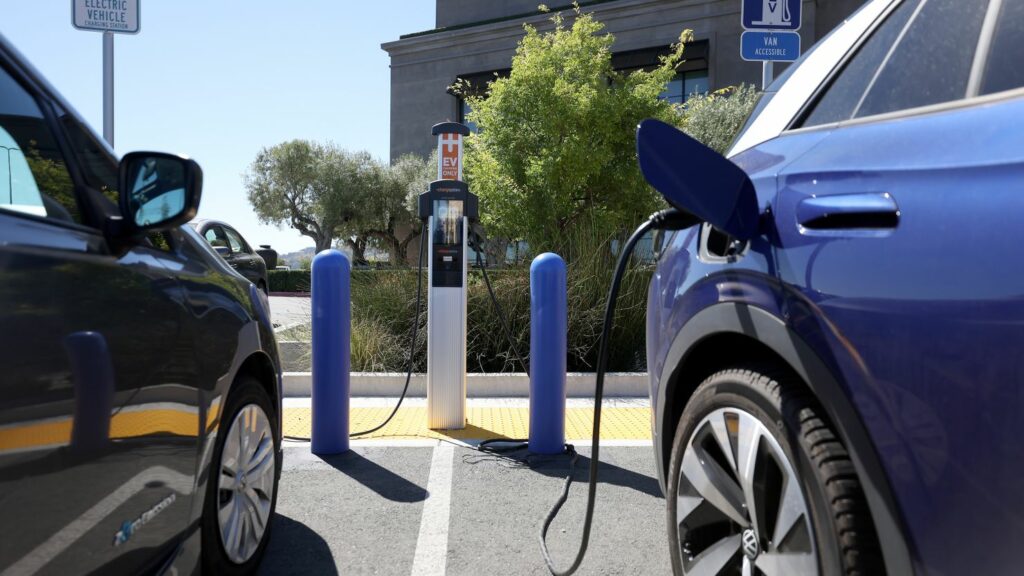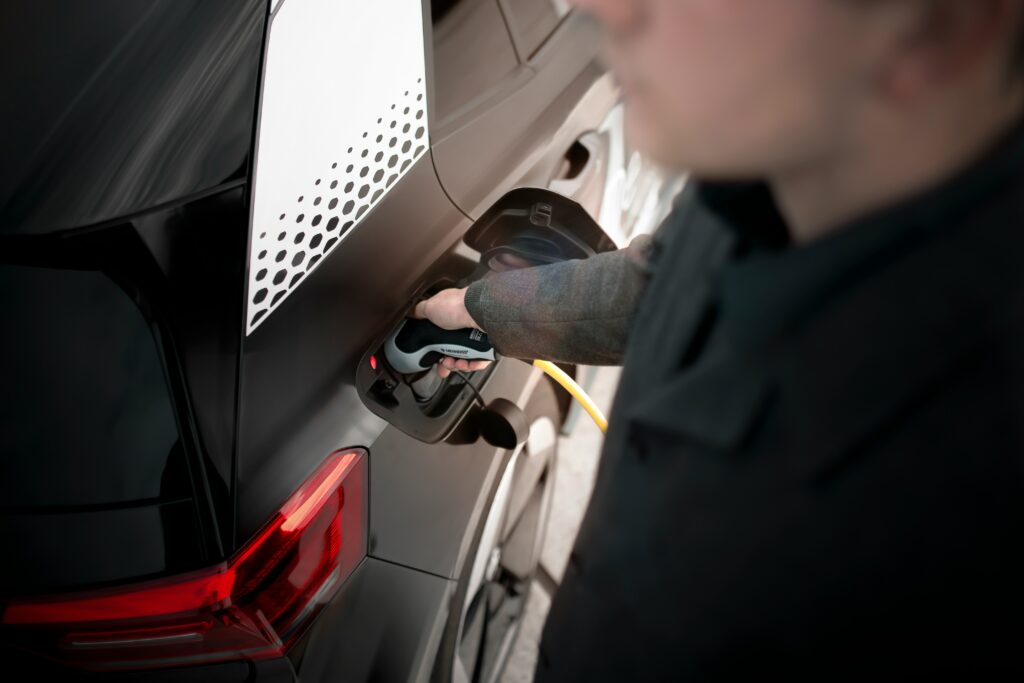We realize the immolation of the Hindenburg didn’t prove Zeppelins were always and everywhere a bad idea. Nor is it terrifying that the first pedestrian ever killed by a car contrived to do it in 1896 at the wheels of a vehicle moving at about 8 miles per hour. But it’s hard to overlook the fact that electric vehicle batteries are disturbingly prone to burst savagely into flames. As JoNova recently pointed out, six people have died in New York in 2022 alone in house fires started by humble e-bikes. If it were any other appliance doing this much damage we have to assume it would have been banned by now. And before dismissing it as a fluke, consider that she quotes an NPR story that starts “Four times a week on average, an e-bike or e-scooter battery catches fire in New York City.” Four times a week? Do gasoline cars do that?
There’s a basic engineering principle that it’s very important not just how likely something is to fail, but how badly it fails. For instance, modern large passenger airplanes have the capacity to glide as much as 60 miles if their engines just plumb fail. And while we have never been on an airplane any of whose engines have failed, or at any rate one on which the pilot felt the need to mention such an event, and certainly not on one all of whose engines have failed, the fact that a 10:1 “lift to drag” ratio means a plane cruising at the normal altitude of around six miles has quite some scope to find a runway, or a soft field, rather than turning nose-down and plummeting like a rock, is quite nice.
By contrast NPR, not exactly a right-wing outfit, quotes the chief fire marshal at the New York Fire Department, Dan Flynn, that “These bikes when they fail, they fail like a blowtorch. We’ve seen incidents where people have described them as explosive – incidents where they actually have so much power, they’re actually blowing walls down in between rooms and apartments.” Which means they might not just burn you to death. They might blow your head off. Not good.
As NPR further writes, “As of Friday, the FDNY investigated 174 battery fires, putting 2022 on track to double the number of fires that occurred last year (104) and quadruple the number from 2020 (44). So far this year, six people have died in e-bike-related fires and 93 people were injured, up from four deaths and 79 injuries last year.” And here we see governments pushing to ban gas cars and make us all drive these bombs.
As NBC observed in a separate story about New York EV fires, which are increasingly a thing, FDNY Deputy Assistant Chief Frank Leeb told a briefing, “The lithium ion battery adds a different degree, when we talk about the fire dynamics of it. These rooms flash over in just a mere matter of seconds.” Flash over. Doesn’t sound good. And it’s not; that story also quoted Flynn that “These fires, they come without warning, and when they do go on fire, they’re so intense that any combustibles in the area will catch fire. So we’ve seen secondary fires.”
From an engineering point of view, this kaboom flash business just keeps getting worse. According to NPR, “The longer the batteries are used, the more time it takes to fully recharge them, and it can take up to 8 hours. That in turn makes it harder for owners to keep on eye on their batteries the whole time they are plugged in, which is key for safety.” Whereas it’s not that hard to avoid smoking during the long and tedious process of gassing up your car.
Further, it seems these e-bikes are especially popular with people doing low-paid delivery work, which means they are subject to rugged use and spotty maintenance. And “In addition, new batteries are costly, and the temptation to opt for a less-expensive refurbished battery for much less money is great — especially for couriers who make an average of $12.21 an hour after expenses, according to a survey by Los Deliveristas Union, an advocacy and membership organization.” Worse, one of them explained, “A lot of guys have four, five, six bikes in their apartment and they swap out chargers for different bikes when it doesn’t belong to that bike”.
Of course the technology will improve over time, and manufacturers will probably focus on not having them detonate and slay their owners and their owners’ neighbours. Cars are safer than they used to be (and so are blimps) and New York tenements were dangerous before e-bikes. It’s a matter of proportion.
Those who say we’re all going to die from climate change if we don’t completely alter our civilization in the next eight years are not famous for their sense of proportion, of course. But for the rest of us, the rush to adopt this new technology that’s literally exploding into the marketplace might need the brakes applied.
P.S. We cannot resist quoting Eric Worrall’s sardonic append to this tale, before asking how long it will be before insurers take vehement exception to such death-rattle-traps: “Is there any ‘green’ technology which isn’t out to kill us?” Because the smoke from those fires is no joke either, and the whole manufacturing process of EVs, especially the batteries, is also an environmental catastrophe. As for moving to hydrogen, well, what was it that burned in the Hindenburg again? Oh darn.



A few thoughts. I have used cutting, drilling and sawing tools for sixty years, many of which belonged to my father whom died in 1970. These are all 'corded' tools which continue work like the day he bought them. (I have changed a few sets of brushes and a cord or two over the years.) Regarding the expense of replacing batteries I would proffer, "The only place you need to use a cordless tool is in the duck blind doing seasonal maintenance." The NPR article referenced failed to mention it is currently illegal to recharge an EV in any enclosed space in the UK. There have been cases where concrete parking structures have collapsed due to the intensity and duration of LI-ion battery fires. Also, outdoor charging stations must allow ten meters between charging vehicles, as when they catch fire there is no extinguishing the blaze--you must let it burn itself out. Sign me up, Brandon. I'll take a red one.
"It's a matter of proportion."
Yes. The absolute risk of these fires is still pretty low. But somebody should translate these numbers in a relative risk reduction figure. I'm guessing that the relative risk reduction by switching from EV to ICE would be in the 90%s. And if a (quickly waning) 90% relative risk reduction is good enough to mandate an experimental gene therapy, then it is surely good enough to ban EVs.
I do find a cordless tool useful William. Maybe would also be something good for a duck too blind but I've never been to one. But I'm am aware of dangers of the batteries and take precautions. I also don't try to "hack" them or use mismatched chargers or buy from vendors that are not clearly "above board". Which of course doesn't mean there will never be an "incident". But it does likely reduce the risk. Seems that many of the reports of fires were with e-bikes using non-matching charges etc. and being charged inside houses or apartments. Probably bad ideas. But having corded EVs would quickly get complicated. You'd need very long cords for them to be useful. Then it would get complicated with multiple vehicles on highways etc. So I guess there is some logic behind using batteries. Not that this makes me a fan of EVs. Aside from the environmental impact, which may be far greater than for ICE vehicles, there are many more impracticalities. I'll stick with liquid fuels for as long as I can.
In flight fires on eVTOL aircraft will make for a whole new set of airworthiness regulations that might require jettisoning the battery as the only 'solution' -neither whole aircraft parachutes or multiple motor redundancy will help. Several crashes due to runaway battery fires in the 70s occurred with desperate attempts to get on the ground (in jet fuel powered aircraft) -one blew the nosecone right off . I had a battery caused 'fire' in a type 3 VW caused by the seat springs shorting out the battery below and the stuffing smouldering ( not unknown in VWs) -ripping out the seat in the middle of the road solved the problem but no such option for an aircraft or for batteries holding vast amounts more energy . Very memorable event.
They will need to find an alternative to the Lithium Ion batteries. A short-circuit will start them burning and the heat they generate is unbelievable. L-ion batteries were named as the cause of a UPS 747 fire and crash in Dubai. When the TSA recreated the fire in a lab, it got out of control and nearly scared the engineers to death. L-ion batteries are suspected in another 747 cargo jet crash as well. Any substance that burns like that should not be used in consumer products.